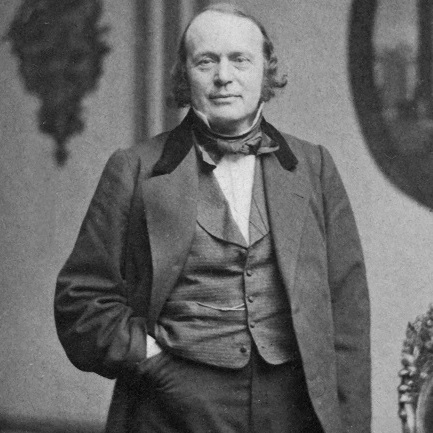Famous Biologist Louis Agassiz on the Usefulness of Learning Through Observation.

{source}
Louis Agassiz, the famous Swiss biologist, placed a fish specimen on the table in front of his post-graduate student.
“That’s only a sunfish,” the student said.
“I know that,” Agassiz replied.
He continued, “Write a description of it. Find out what you can without damaging the specimen. When I think that you have done the work, I will question you.” (1)
The Power of Observation
The student wrote for an nearly an hour, until he felt confident that he knew nearly all there was to know about this particular fish.
Much to the student’s frustration, however, Agassiz did not return to see him that day. His teacher did not come the next day either. Nor for the entire week that followed. Eventually, the student realized Agassiz’s game: the teacher wanted him to observe the fish more deeply.
After nearly 100 hours of study, the student began to notice finer details that had escaped his vision previously: how the scales of the fish were shaped and the patterns they made, the placement of the teeth, the shape of each individual tooth, and so on. When his teacher finally returned and the student explained all that he had learned, Agassiz replied, “That’s not right,” and walked out of the room. (2)
Shocked and angry at first, the student eventually recommitted to the task with new vigor. He threw out all of his previous notes. He studied the fish for 10 hours per day for an entire week. When he met with Agassiz a final time, the student had produced work that “astonished.” (3)
The Art of Comparing Objects
After his investigation of the sunfish, Agassiz’s student wrote, “I had learned the art of comparing objects.” How does this tooth compare to the one next to it? How does this scale compare to the one on the opposite side? How does the symmetry of the bottom half of the fish compare to the top half?
The art of comparing objects is a remarkably useful strategy in many areas of life. Take weightlifting, for example.
For the first five years that I lifted weights, I experienced mediocre results at best. I assumed that it was information that held me back. Like many people, I thought that once I found the right workout routine, then I would be set. I was under the assumption that I simply hadn’t reached the next level yet because I hadn’t come across the right information.
What I didn’t realize was that my search for the perfect pre-made formula was preventing me from observing my actual results.
When I started to observe with greater care and focus, I realized that my body tended to respond better to higher volume rather than higher intensity. I noticed that my foundational strength in major movements like the squat and deadlift was lacking. I was able to use these observational discoveries to tailor my training to my needs and, subsequently, make much greater strides because of it.
It was through comparing what I was doing with what was actually working for me that I made progress.
Do the Work for Yourself
“I never pay attention to anything by ‘experts’. I calculate everything myself.” ~ Richard Feynman
When Richard Feynman, the brilliant physicist, was working on a new theory of beta decay, he noticed something surprising. For years, experts had been saying that beta decay occurred in a particular way, but when Feynman actually ran the experiments, he kept getting a different result.
Eventually, Feynman investigated the original data that all of the experts were basing their theory on, and discovered that the study was flawed. For years, nobody had bothered to read or repeat the original study! All of the experts just kept quoting one another, and used their mutual opinions as justification for the theory.
Then Feynman came along and turned everything upside down, simply because he did the calculations himself. (4)
Look, and See for Yourself
“Take the facts into your own hands; look, and see for yourself!” ~ Louis Agassiz
Pick any industry of life and you’ll find that very few people actually do the work.
Rather than read the original study, most people cite the headline from a secondary source. Rather than spend 100 hours observing every detail of a fish, most biology students would look up the description of the fish online. When most people say, “I read an article on climate change,” what they really mean is, “I read the title of an article on climate change.”
This is exactly why doing the boring work more consistently is actually a competitive advantage. Ignore the expert advice and pay attention to what gets results for you.
Look, and see for yourself.
This article was originally published on JamesClear.com.
Footnotes
- This story about Agassiz has been told by two different sources. First, in The Autobiography of Nathaniel Southgate Shaler, who was a student of Agassiz. Second, in Ezra Pound’s classic book, The ABC of Reading (Kindle). Pound’s version is known as the Parable of the Sunfish and deviates slightly from the original sources. I’ve done my best to represent Agassiz accurately here.
- From what I can tell, this was fairly standard behavior for Agassiz. He would, reportedly, “lock a student up in a room full of turtle-shells, or lobster-shells, or oyster-shells, without a book or a word to help him, and not let him out till he had discovered all the truths which the objects contained.” (Source: Speech by William James at the reception of the American Society of Naturalists on December 30, 1896.)
- The Autobiography of Nathaniel Southgate Shaler. Page 99.
- Surely You’re Joking, Mr. Feynman! (audiobook) by Richard Feynman. Page 254-255.
***
{Join us on Facebook, Twitter, Instagram & Pinterest}
